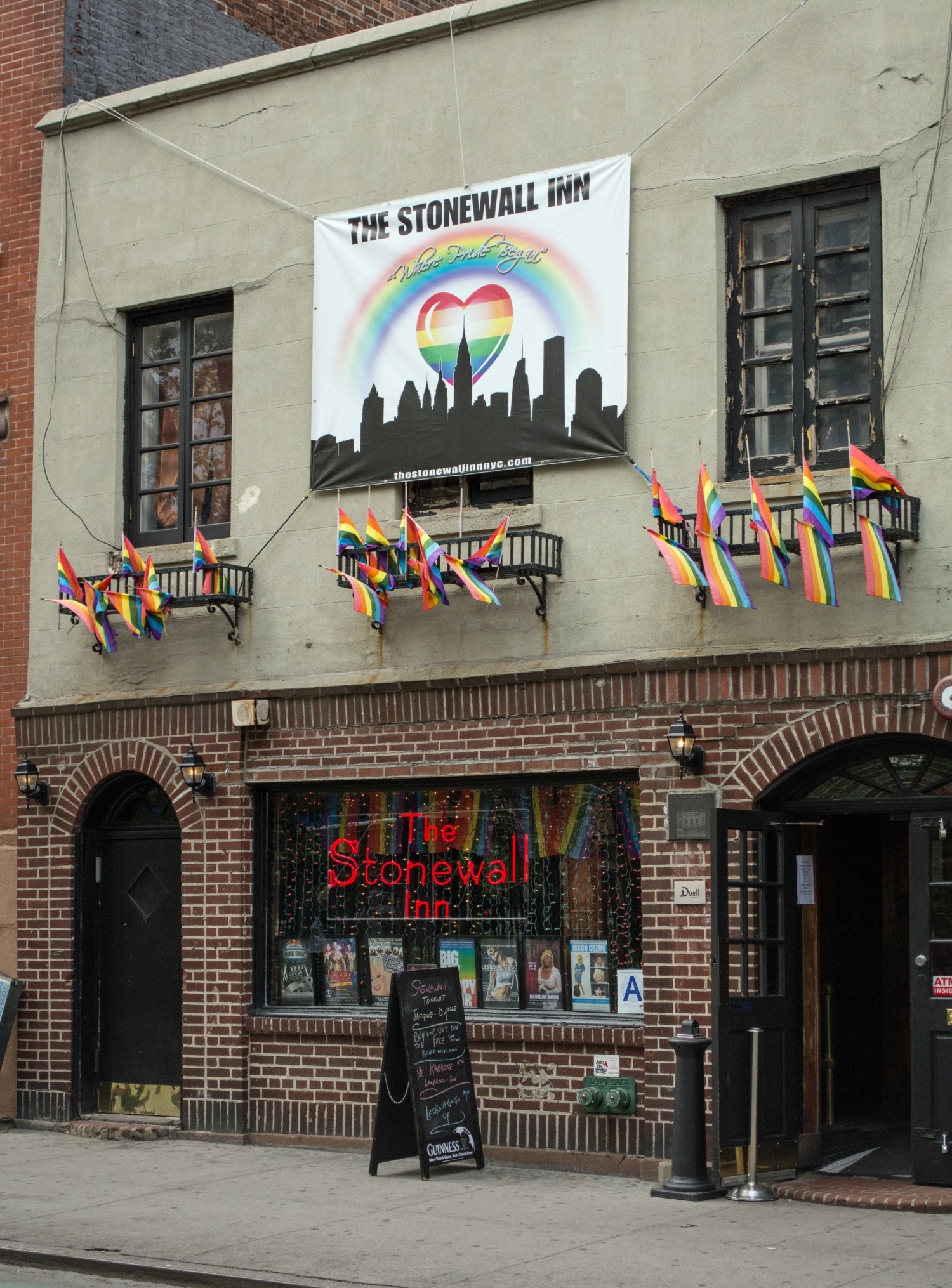Stonewall Inn Expected to Get Landmark Status

The Stonewall Inn at 51-53 Christopher Street in Manhattan's Greenwich Village is being considered for landmark status. New York City's Landmarks Preservation Commission is expected to designate the historic site as a city landmark on Tuesday. The site of the Stonewall Uprising in 1969 was already listed as a National Historic Landmark in 2000, but its designation as a New York City Landmark would protect the Inn from change or renovation.
The historic significance of the "Stonewall Uprising" comes from its incendiary role in sparking the modern gay rights movement. The Stonewall Inn was one of the most successful gay bars in New York City in the late 1960s. Mafia ownership afforded the bar a certain degree of protection that allowed Stonewall unparalleled longevity. While most gay bars at the time would last a few months before being closed down by the police, Stonewall lasted two years until it closed in 1969.
The Stonewall Uprising was a series of protests and demonstrations beginning the night of Friday June 27, 1969, and continuing for a total of six nights. It began with a police raid of the Stonewall gay bar, which inspired violent retaliation from patrons. The police were forced to barricade themselves in the bar and call for reinforcements. The protestors then laid siege to the bar from the outside. David Carter, author of the book Stonewall: The Riots that Sparked the Gay Revolution, says the focal point of the first night's demonstrations is particularly important when considering the Inn for landmark status. While the inside of the Inn has been renovated, and one of the buildings is currently a nail salon, Carter says the facade of the building remains the same as it was in 1969. Carter explains that the facade is particularly worthy of protection as a landmark because it was the focal point of the first night's demonstrations, which were the most dramatic and tend to sieze people's imaginations most effectively.
Carter also elucidates the fundamental shift in the attitude toward gay rights, which took place largely as a result of the Stonewall demonstrations. He says Stonewall inspired a mass conversion from homophile organizations, to gay liberation and civil rights organizations. Homophile organizations had been largely concerned with cooperation with scientists in the search for a "cure" to gayness. The prevailing attitude at the time classified homosexuality as a sickness, until a new culture of civil liberation ideology culminated in the protests at Stonewall and began a civil rights movement modeled after the black civil rights movement.
Activist Frank Kameny is largely credited with beginning the gay civil rights movement through efforts including annual "reminders" of the fact that gays rights still hadn't been recognized. About five and a half months after Stonewall, these "reminders" developed into the parades and marches that characterize the modern gay rights movement.
There is a separate effort to designate the site of the Stonewall Uprising as a national park or monument.
In President Obama's inaugural address he drew parallels between Stonewall, Seneca Falls, and Selma. David Carter feels that recognition of Stonewall as a national monument would elevate the status of the gay rights movement to the same platform as the universal suffrage movement and the black civil rights movement.

